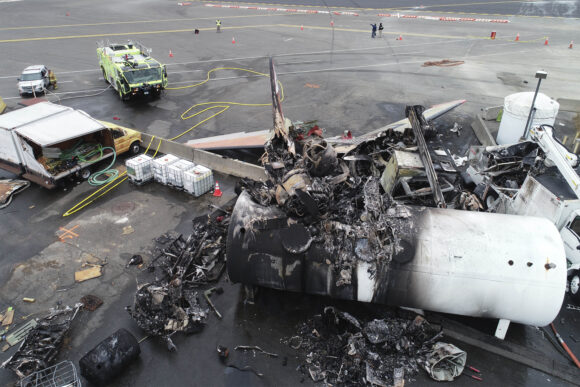Federal safety officials are making another push for stricter oversight of air tour operators and hot-air balloon rides after several deadly crashes in recent years.
The National Transportation Safety Board on Tuesday asked the Federal Aviation Administration to raise safety requirements for the passenger-carrying operations, which fall under less restrictive regulations than airlines do for things such as pilot training and maintenance.
“When people step on board an aircraft as paying passengers, they have the right to trust that the flight will be operated as safely as possible,” NTSB Chairman Robert Sumwalt said at the end of a board hearing on the matter.
Some airplane and helicopter tours operate under rules for “general aviation,” a category that mostly covers private planes not used to carry paying passengers. Safety board members said some of the operators exploit loopholes in FAA regulations to avoid stricter oversight.
The FAA said in a statement that it “has a number of initiatives under way to improve the safety” of passenger-carrying general aviation operations, including requiring air tour operators to have safety-management programs and requiring balloon pilots to pass medical exams.
Under current FAA rules air tours are subject to more inspections than other private planes, tours must take off and land at the same airport, and operators must have drug and alcohol testing programs for employees. NTSB members said, however, those steps aren’t enough and that some tour operators evade closer monitoring by how they describe their flights.
Board members cited a 2018 helicopter tour over New York City that was using an exception granted for aerial photography when it crashed, killing all five passengers, and the 2017 crash in California of an acrobatic stunt plane that killed the pilot and passenger — it was operating as an instructional flight.
“This is one of the most egregious examples of exploiting a loophole, in my opinion,” board member Jennifer Homendy said of the California crash. She said the operator, Sky Combat Ace, advertised an “adrenaline rush package” and other thrill-seeking rides. “Does that sound like a flight school?”
The company disputed Homenday’s comments.
“The reason we operate under flight instruction regulations … is that all of our customers take the controls of our aircraft under the supervision of one of our highly trained, certified flight instructors,” spokesperson Megan Fazio said in a statement.
Fazio said the company doesn’t fit the FAA definition of an air tour operator, and “our pilots have a higher level of certification than air tour operators require.”
Board members also suggested that better oversight might have prevented the 2019 Connecticut crash of a World War II-era bomber that killed seven people and the 2016 crash of a hot air balloon in Texas that killed the pilot and all 15 passengers. The NTSB blamed poor decision-making by the pilot as the probable cause of the balloon crash, the worst U.S. aviation accident since 2009.
The NTSB made six new recommendations and reprised two previous ones to the FAA that would set new safety standards for certain revenue-making passenger operations and provide more guidance to FAA inspectors who monitor them.
About the photo: This photo, provided by the National Transportation Safety Board, shows damage from a World War II-era B-17 bomber plane that crashed on Oct. 2, 2019, at Bradley International Airport in Windsor Locks, Conn. The only surviving crew member of the bomber that crashed in Connecticut last year, killing seven people, told investigators that “everything was perfect” before take off and he doesn’t understand what went wrong, according to federal documents released Wednesday, Dec. 9, 2020. (NTSB via AP)
Was this article valuable?
Here are more articles you may enjoy.


 ‘Super Roofs’ Are Rewarding Insurers, Cat Bond Investors and Homeowners
‘Super Roofs’ Are Rewarding Insurers, Cat Bond Investors and Homeowners  Atmospheric River to Flood Pacific Northwest Through Week
Atmospheric River to Flood Pacific Northwest Through Week  NYT, Chicago Tribune Sue Perplexity AI as Copyright War Rages On
NYT, Chicago Tribune Sue Perplexity AI as Copyright War Rages On  Standard Chartered Settles $2 Billion Iranian Sanction Suit in London
Standard Chartered Settles $2 Billion Iranian Sanction Suit in London 